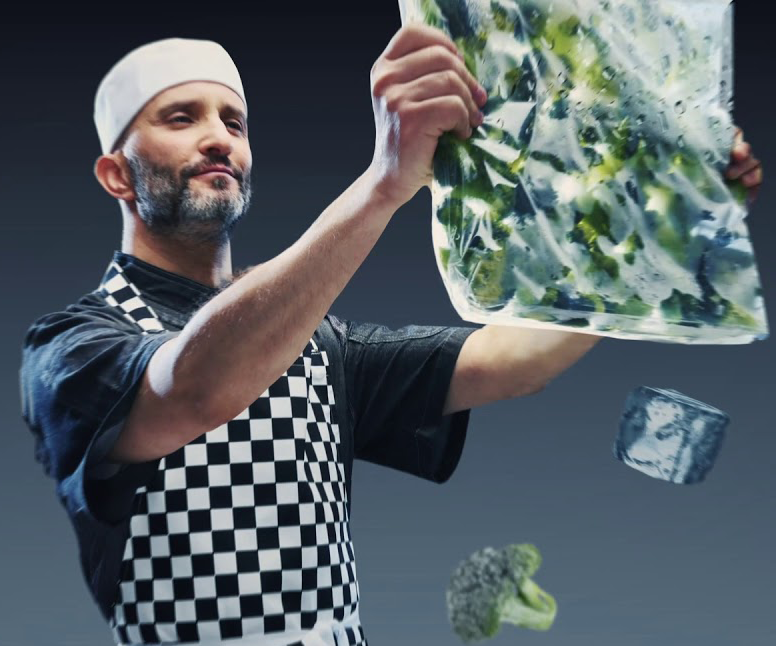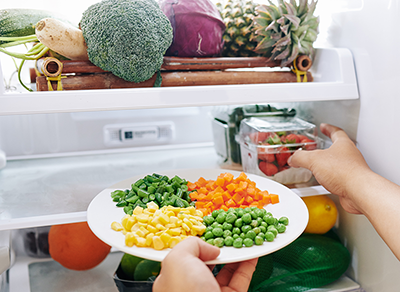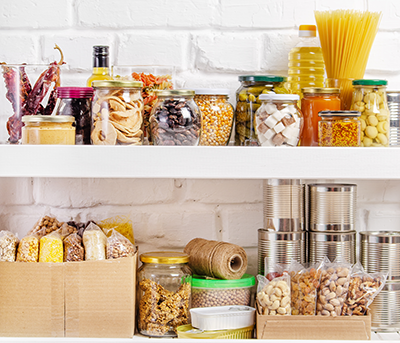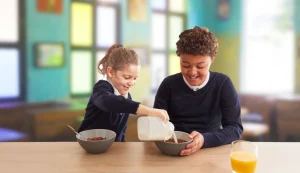Save food, money, and the planet during Food Waste Action Week
This week marks Food Waste Action Week, created by WRAP (Waste and Resources Action Programme) to raise awareness of the environmental consequences of wasting food. The campaign focuses on promoting activities that will help make food wastage a thing of the past and encouraging individuals to pledge to stop good food from being wasted at home and work.
Whether you’re a chef, server, part of the head office team, working, or on furlough, we can all make small changes at work and at home to reduce the amount of food we waste, which will make a huge difference for ourselves and our planet.
From decreasing the temperature of your fridge to freezing herbs, Food Waste Action Week aims to get us all thinking about how we can Love Food Hate Waste. From 1-7 March, WRAP is asking individuals from all walks of life to reduce the edible food you throw away at home as close to zero as possible.
In the UK, the hospitality and food service sector throw away over one million tonnes of food, 75% of which could have suitable for eating. Food Waste Action Week will bring together the whole food supply chain to curb waste, with over 70 food businesses backing the campaign.

Wasting food feeds climate change
Every scrap of food waste directly impacts climate change, which is why WRAP’s message is ‘wasted food feeds climate change’. The production of every pea, potato and slice of bread releases CO2e into the atmosphere, and the problem worsens when that food ends up in the bin.
If food waste were a country, it would be the third-largest emitter of greenhouse gases after China and the US.
For those working in restaurants and food outlets, WRAP has launched the Guardians of Grub campaign to reduce food waste in the industry and help restaurants defend their profits and help protect the environment.
WRAP has encouraged the industry to save food by using the #FoodWasteActionWeek and #GuardiansofGrub hashtags and tagging @LFHW_UK on social media channels. Visit Guardians of Grub for more information on becoming a guardian and access the free food wastage tracking tools to rise against food waste in your workplace.

The restaurants tackling food wastage
At The Ship Inn, Cumbria, measuring food helped reduce food waste by 72% by identifying hotspots and making tweaks, such as adjusting portion sizes and reassessing garnishes. The result saved money and satisfied customers.
Meanwhile, the Harrington Arms, Gawsworth, identified potential estimated food waste savings totalling £10,999 a year when factoring in associated costs such as the energy used in cooking and storage, staff time, waste disposal and water.
Love Food Hate Waste’s top 10 tips for Food Waste Action Week
1. It’s a date! ‘Use by’ is about safety. Food should not be eaten after this date (even if it looks/smells fine). ‘Best before’ is about quality; although food won’t be at top quality after this date, it will still be safe to eat for some time.
2. ‘Compleat’ – Always binning crusts and broccoli stems? Over two-thirds of waste is perfectly edible, so use every edible part of your food (‘compleating’). Try leaving the skin on when you make mashed potato” this will save you time as well!
3. Chill the fridge out – The average fridge temperature in UK homes is nearly 7°C, but foods will last longer if kept under 5°C. Not sure how to adjust your fridge temperature? Love Food Hate Waste can help.

4. Everything in proportion – Many of us have been in a situation where we’ve ended up with a mountain of pasta or rice. It’s easy to do, but there are simple ways to cook the perfect amount. For example, a mug filled with dry rice will cook enough for four adults.
5. Snap a ‘shelfie’ – If you’re not a fan of shopping lists, take a picture of your fridge/cupboard shelves before you head to the shops instead. This visual reminder will stop you from buying something you’ve already got at home.
6. Savvy storage. Most fruit and veg will stay fresher for longer in the fridge, except for bananas and pineapple (keep these on the counter) and onions and potatoes (ideally stored in a cool, dark place -like a cupboard). Not sure where to keep certain foods? Try Food Storage A-Z from Love Food Hate Waste.

7. Freeze up to the use by date – All foods with a use-by date, including meat, can be frozen right up to this date. Before you order an emergency takeaway, check your fridge for anything suitable for freezing for another day.
8. Make us of the ice-cube tray – Too much milk, not enough time? Pour your remaining milk into ice-cube trays and freeze – this is the perfect amount for a brew. You can also use ice-cube trays to freeze fresh herbs. Chop them up, pop them in the tray, and top them up with oil, and then you have portions to add to the pan next time you’re cooking.
9. Use your loaf – Bread is another food that freezes well. Put your sliced loaf in the freezer, and then you can pick out a slice at a time and toast straight from frozen. Extra tip: tap the loaf on the counter before freezing to stop the bread slices from sticking together.
10. Label frozen objects – Before you freeze your leftovers, label the bag/container telling you what’s inside and when you froze it, which will help you identify foods that are due to expire.
We all have a role to play and are part of the solution, contributing to the UK goal of halving food waste by 2030. With these tips from Love Food Hate Waste, we can all take part and help to reduce our food wastage and environmental impact during Food Waste Action Week and beyond.
Contribute to the conversation by sharing your best hacks, tips and tricks for reducing food wastage. Tag @LFHW_UK and use the hashtag #FoodWasteActionChallenge from 1-7 March.





